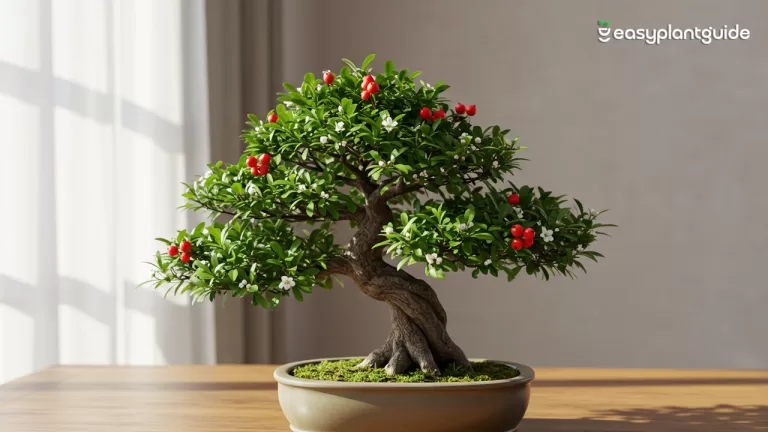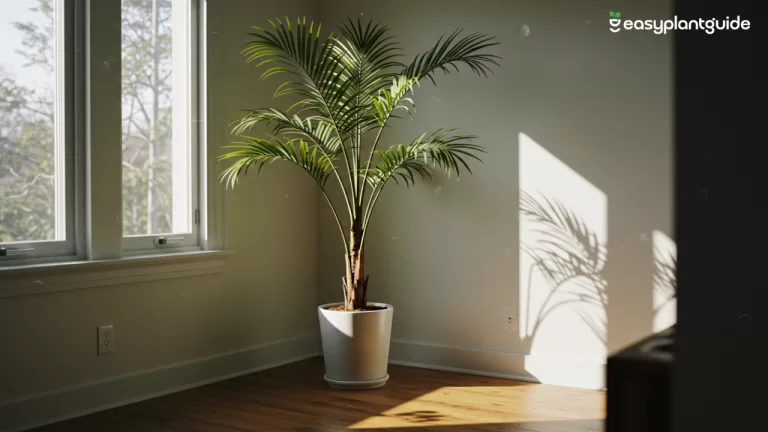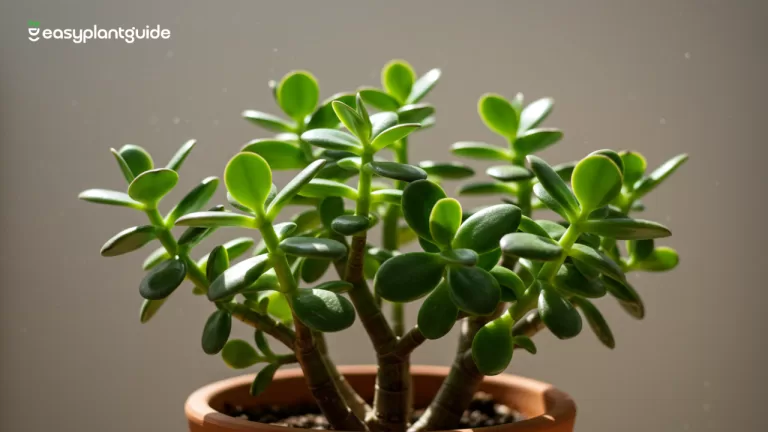Calathea Prayer Plant Care: 7 Essential Secrets for Perfect
If you’ve ever owned a Calathea Prayer Plant, you already know how stunning (and sometimes dramatic) these tropical beauties can be. Their patterned leaves fold up at night like hands in prayer, giving them their unique nickname. But here’s the thing: Calathea prayer plant care can be a little tricky. One wrong move with water, light, or humidity, and they’ll quickly protest with brown tips, curling leaves, or fading patterns.
Don’t worry—I’ve got you covered. In this guide, I’ll walk you through everything you need to know about Calathea prayer plant care in a simple, friendly way. You’ll discover how to keep those vibrant leaves healthy, how to fix common issues, and how to help your Calathea thrive like a pro.

What is a Calathea Prayer Plant?
The Calathea Prayer Plant is a tropical houseplant from the Marantaceae family, native to the lush rainforests of South America. Known for its striking foliage, it features bold patterns in stripes, spots, or feather-like designs that make it a true statement piece indoors. At night, its leaves fold upward like praying hands, giving it the famous nickname “prayer plant.”
While beautiful, this plant is often mistaken for the Maranta, another prayer plant variety. However, Calathea species have more dramatic patterns and a reputation for being slightly fussier to maintain. That’s why understanding proper Calathea prayer plant care is essential if you want to keep its leaves vibrant and healthy without running into common problems like curling or browning.
Best Light Conditions for Calathea
When it comes to Calathea prayer plant care, light is one of the most important factors to get right. These plants love bright, indirect sunlight, but too much direct sun can scorch their delicate leaves, leaving unsightly brown patches. Placing your Calathea near an east-facing window provides gentle morning rays, while sheer curtains can help filter stronger sunlight. Rotating the plant every few weeks ensures all sides receive equal light, promoting even growth and maintaining those signature patterned leaves.
In addition, it’s important to avoid dark corners or rooms with very low light, as this can cause the leaves to lose their vibrant colors and slow growth. During winter or in spaces with dim natural light, using supplemental grow lights can help your plant thrive. Paying attention to light conditions is a key part of Calathea prayer plant care, ensuring your plant stays healthy, vibrant, and full of life year-round.
Watering Your Calathea Prayer Plant
One of the trickiest parts of Calathea prayer plant care is getting the watering just right. These plants love consistently moist soil, but soggy roots can quickly lead to rot, making it a delicate balance. Using room-temperature, filtered water is best, as tap water often contains minerals that can burn the leaves. A good rule of thumb is to water whenever the top inch of soil feels slightly dry, making sure to drain any excess water so it doesn’t sit in a saucer.
Seasonal changes also affect how often you should water. In summer, your Calathea will drink more, while in winter, it needs less. Occasionally misting the leaves can help boost humidity during dry periods, mimicking the tropical environment these plants thrive in. Paying attention to these details is essential for Calathea prayer plant care, keeping your leaves lush, vibrant, and healthy year-round.
Humidity: The Secret to Happy Leaves
For optimal Calathea prayer plant care, maintaining high humidity is key. Native to tropical rainforests, Calatheas thrive in environments with 50–60% humidity or higher. Dry indoor air can quickly lead to brown leaf edges, curling, or stressed foliage, so creating a moist atmosphere is essential for keeping your plant healthy and vibrant.
There are several simple ways to boost humidity around your Calathea. Placing the pot on a pebble tray with water helps add moisture to the air, while grouping plants together creates a mini jungle climate that benefits all of them. Investing in a small humidifier can make a big difference, especially during dry seasons, and lightly misting the leaves occasionally can help as well. Just be sure to keep your Calathea away from heaters, air conditioning vents, or overly dry areas, as stable humidity is a cornerstone of proper Calathea prayer plant care.
The Right Soil Mix for Calathea
YA key part of Calathea prayer plant care is providing the right soil. Calatheas thrive in a mix that is well-draining yet retains moisture. Too-heavy soil can suffocate the roots, while a sandy mix dries out too quickly, leaving your plant stressed and unhappy. Choosing the correct soil ensures healthy root growth and vibrant foliage.
For a DIY soil blend, combine two parts peat moss or coco coir, one part perlite, and one part orchid bark. This mix holds enough moisture to keep the plant hydrated but still allows excess water to drain away, preventing root rot. Using the right soil is a simple but essential step in Calathea prayer plant care, helping your plant flourish indoors with lush, healthy leaves.
Fertilizing Tips for Prayer Plants
Proper feeding is an important part of Calathea prayer plant care, but it doesn’t have to be complicated. These plants benefit most from a little nutrient boost during their active growing season, which runs from spring through summer. Fertilizing helps promote vibrant leaves, healthy growth, and overall plant vitality, keeping your Calathea looking its best.
For best results, use a balanced liquid fertilizer, such as 10-10-10 or 20-20-20, and dilute it to half strength before applying. Feed your plant every four weeks during the growing season, but skip fertilizing in fall and winter when the plant naturally rests. Always water your Calathea before feeding to prevent root burn and ensure the nutrients are absorbed safely. Paying attention to fertilization is a simple yet essential step in effective Calathea prayer plant care.
Temperature Requirements
Maintaining a stable temperature is an essential part of Calathea prayer plant care. These tropical plants thrive in cozy, consistent conditions, ideally between 65–80°F (18–27°C). Sudden temperature changes, like cold drafts from open windows in winter or exposure to air conditioning vents, can stress the plant and cause its leaves to curl or droop.
It’s also important to ensure the temperature never drops below 60°F (16°C) and to keep the plant away from hot radiators or stoves. Providing a stable environment allows your Calathea to grow healthily and maintain its vibrant, patterned foliage. Consistent warmth and care are key to keeping your Calathea happy and thriving.
Calathea Prayer Plant Problems and Solutions
| Problem | Likely Cause | Quick Fix |
|---|---|---|
| Brown leaf tips | Low humidity / hard tap water | Use filtered water & boost humidity |
| Curling leaves | Underwatering / too much sunlight | Water evenly & move to indirect light |
| Yellowing leaves | Overwatering or poor drainage | Let soil dry slightly & improve soil mix |
| Droopy leaves | Temperature stress or low water | Keep temps stable & check soil moisture |
| Faded leaf patterns | Insufficient light | Move closer to bright, filtered light |
| Stunted growth | Lack of nutrients or small pot | Fertilize monthly & consider repotting |
Pruning and Maintenance
Pruning is a simple but important part of Calathea prayer plant care. Regular trimming helps remove old or damaged leaves and encourages fresh new growth, keeping your plant looking vibrant and healthy. Here’s how to do it properly:
- Use clean, sharp scissors to prevent infection.
- Cut leaves at the base of the stem for a neat appearance.
- Wipe leaves gently with a damp cloth to remove dust and improve photosynthesis.
- Inspect regularly for pests, as spider mites can be attracted to Calathea.
- Rotate the plant periodically for even sunlight exposure and balanced growth.
Propagation of Calathea Prayer Plant
Unlike pothos or philodendrons, Calathea doesn’t grow well from stem cuttings. The most effective way to propagate is through division during repotting. Following proper steps ensures healthy new plants and supports overall Calathea prayer plant care:
- Gently remove the plant from its pot without damaging roots.
- Separate root clumps, making sure each division has at least one healthy stem.
- Plant the divisions in fresh, well-draining soil mix.
- Keep the new plants in warm, humid conditions to mimic their natural environment.
- Water lightly until new growth emerges to avoid overwatering stress.
Repotting Calathea
Repotting is an essential part of Calathea prayer plant care, as it refreshes soil and gives roots more room to grow. Calatheas prefer a snug pot, but repotting every 1–2 years keeps them thriving. Here’s the process:
- Choose a pot just 1–2 inches larger than the current one to prevent excess soil moisture.
- Refresh the soil with a well-draining mix suitable for Calathea.
- Handle the roots carefully—they are delicate and can easily break.
- Repot in spring for the best recovery and growth results.
- Avoid overpotting, as too much soil can lead to soggy roots and stress the plant.
5 Reasons Why Calathea is Worth the Effort

1. Striking Leaf Designs
One of the main reasons to invest in Calathea prayer plant care is the stunning foliage. The leaves display intricate patterns that look like living art, instantly brightening up any indoor space.
2. Nightly “Prayer” Movements
Calathea leaves fold up at night, creating a charming “prayer” motion. Observing this nightly routine adds personality and a dynamic touch to your home environment.
3. Improves Air Quality
Beyond aesthetics, Calatheas help purify the air and add tropical vibes to your living space. Proper Calathea prayer plant care ensures your plant stays healthy and continues to contribute to a fresher indoor atmosphere.
4. Pet-Friendly Houseplants
Unlike many indoor plants, Calatheas are non-toxic and safe for households with cats and dogs, making them an ideal choice for pet owners who still want lush greenery.
5. A Rewarding Challenge
Caring for a Calathea can be a fun, rewarding challenge for plant lovers. With the right attention to water, light, and humidity, your plant thrives and gives you a sense of accomplishment that few other indoor plants can offer.
Calathea vs. Maranta: What’s the Difference?
Many plant lovers confuse Calathea with Maranta, as both are often called prayer plants. However, for proper Calathea prayer plant care, it’s important to understand the differences. Calathea has larger, bolder leaf patterns and tends to be a bit fussier to maintain, while Maranta features smaller, oval leaves and is generally more forgiving. At night, Calathea dramatically folds its leaves upward, creating the classic “prayer” motion, whereas Maranta’s leaves shift slightly in a subtle “walking” movement. Both plants are non-toxic to pets, making them safe choices for households with cats or dogs.
Conclusion
Caring for a Calathea Prayer Plant might feel like babysitting a diva, but once you understand its needs—light, water, humidity, and love—it rewards you with breathtaking foliage and mesmerizing leaf movements. Yes, it can be a little dramatic, but isn’t that part of its charm?
So, if you’ve been stressing about your Calathea, stop worrying. Follow these tips, be consistent, and soon you’ll have a thriving, prayerful beauty that becomes the star of your indoor jungle.
Explore more plant blogs and grow your green journey with us.







